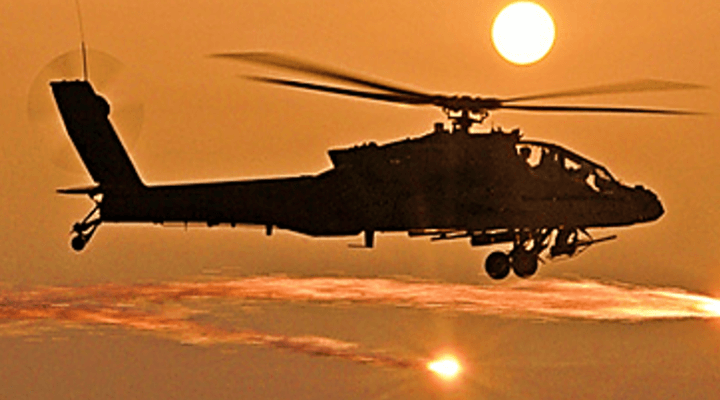Last Friday, the Army took a huge step forward in the effort to modernize its helicopter fleet when made the long-awaited announcement that it had selected General Electric Aviation to build the new Improved Turbine Engine. The ITEP (the “P” is for “Program”) is the replacement for the existing engine in the Army’s fleet of UH-60 Black Hawk and AH-64 Apache helicopters. The award, a “downselect” from two competing designs to one, represents the ITEP’s “Milestone B” decision, meaning the program has cleared the Technology Maturation and Risk Reduction phase.
The GE design had been in competition with one from the Advance Turbine Engine Company, a joint venture between two other turbine giants, Pratt & Whitney and Honeywell. GE will build the engines in its Lynn, MA plant just outside Boston.
Interestingly, in this hyper-competitive era when contract award protests are to be expected, ATEC gave no indication that one was coming. In a press release, Craig Madden, ATEC’s president, just said, “We were disappointed to learn that the U.S. Army did not select our offering, the dual-spool T900. We believe that we offered the most advanced, capable and lowest risk engine for ITEP for the Army to improve the overall performance of its Apache and Black Hawk fleets.”
One assumes that ATEC will be able to sell its engine for other applications.
ITEP is an integral part of aviation modernization
The award, worth nearly $517.4 million, enables GE and the Army to proceed with the Engineering and Manufacturing phase, which will end with a “Milestone C” decision authorizing Initial Low-Rate Production. That decision should come in late 2024 or early 2025. That timing is important, because it meshes with the Army Strategy for restoring lost readiness by 2022, at which point it will begin to produce modernized weapons systems that can come online by 2028.
Determining the requirements for those new new weapons systems is the responsibility of the new Army Futures Command’s six cross-functional teams. One of those teams, Future Vertical Lift, has already got its eye on the ITEP for at least one other program. Jim Thomson, Jr., the team’s acting deputy director, recently told Defense News that the CFT has already incorporated the ITEP into the requirements for the Future Attack Reconnaissance Aircraft.
The retirement of the venerable OH-58D Kiowa Warrior left a gaping hole in the Army’s capabilities. Reconnaissance is now the responsibility of Apaches, with some help from unmanned aerial systems. The Army’s first attempt to replace the Kiowa, the Armed Reconnaissance Helicopter, died a nasty death after Bell Helicopter was unable to follow-through on its promises and the program suffered what’s know as a “Nunn-McCurdy breach”—the statutory requirement to inform Congress when cost overruns exceed 25 percent of the original estimates. Further attempts to find a suitable aircraft fell victim to sequestration.
The ITEP will not only improve the performance of the Black Hawk and Apache fleets, it will simplify maintenance requirements in the future force by providing a common engine for not two, but at least three airframes.
Putting muscle back in proven aircraft
The Black Hawk and Apache were two of the “Big 5” acquisition programs that fielded new capabilities in the early 1980s. The other programs are still around as well: the Abrams main battle tank, Bradley infantry fighting vehicle, and Patriot missile system. All of these systems have received numerous upgrades over the years to incorporate new technologies and provide new capabilities. But those capabilities come at a price.
The price was paid in performance. Over the years, the Black Hawk and Apache lost speed, lift capability, and range as more armor and other equipment were added. The ITEP is designed to solve that problem. The new engine will provide 50% more horsepower than the current engine, while reducing fuel consumption by 25% and maintenance costs by as much as 35%.
Put simply, the ITEP will allow both aircraft to carry more weight, at higher altitudes, farther, and in hotter temperatures than they can today. The helicopters designed for use primarily in Europe will finally have the guts they need to face the harsh conditions of Afghanistan and the Middle East. This isn’t to say that the Black Hawk and Apache have failed in their missions. Far from it, they have performed superbly. But the added range and lift capability will enable them to go where they haven’t been able to go before.
Put this one down—so far— as an example of successful acquisition strategy.



